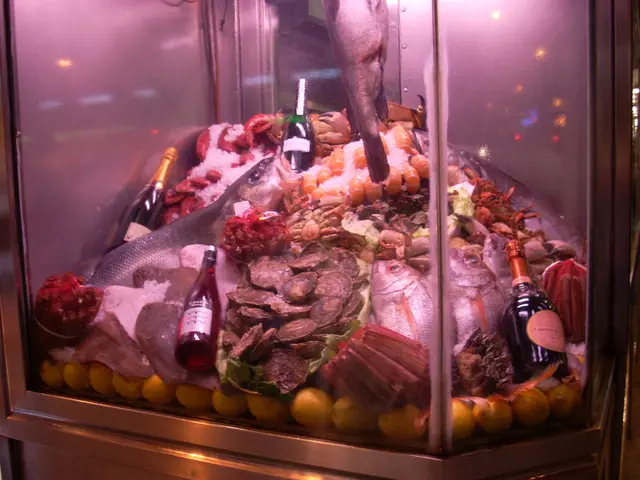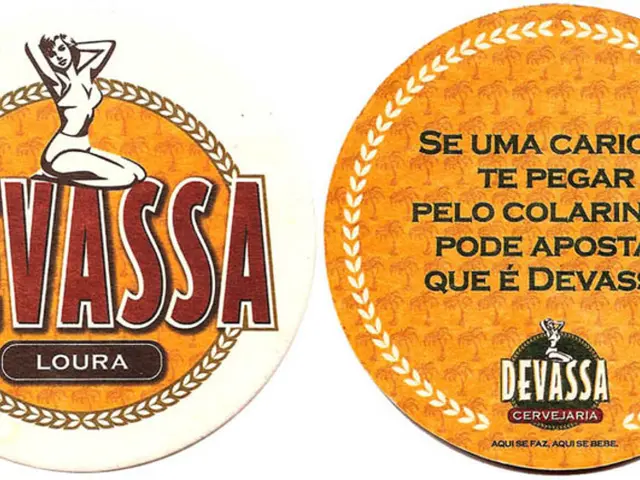Berlin Foraging: A Comprehensive Guide for Each Season
Berlin boasts an abundance of greenery, but it's not just visually appealing - a significant portion of it is edible too. For those in the know, there are numerous ingredients to be found within and around the city throughout the year. Here, we offer an extensive guide to Berlin's top forageable foods, with details on when and where to find them. However, it's crucial to remember that if you're unsure about a plant's edibility, it's better to err on the side of caution and leave it be.
For further information on foraging in Berlin, the online foraging platform Mundraub is a valuable resource.
Spring
At the onset of spring, one edible gem to look out for is wild garlic (Allium ursinum), a plant belonging to the same family as onion and garlic. This versatile green can be added to soups, salads, and various savory dishes, and is most abundant in the moist woodland of Plänterwald and Hasenheide Park, between March and June. Moreover, it's essential to be able to distinguish wild garlic from its poisonous counterparts, such as lilies of the valley and autumn crocuses. Luckily, the potent garlicky smell of wild garlic sets it apart from these toxic plants.
Another springtime offering is Waldmeister (Galium odoratum), fondly known as sweet woodruff or sweetscented bedstraw. With its intoxicating aroma, it has earned the nickname 'vanilla of the forest'. While it was once banned in industrial production for being poisonous to rodents, humans have not reported any harm even with large doses. Sweet woodruff can be found from March to June in moist wooded spots near Hackescher Markt and Ulap Park.
Dandelions (Taraxacum officinale and T. erythrospermum) are another versatile and delicious find in the spring. These yellow flowers can be used not just for making wishes but also for garnishing dishes or dyeing clothing. Both of the common subspecies are entirely edible and can be found in a variety of Eurasian cuisines. They are especially prevalent in Treptower Park during the spring months.
Although asparagus may be difficult to forage for within the city, the vibrant green spears are ubiquitous in Berlin and its surrounding areas, with numerous farms and markets offering fresh asparagus throughout the season.
Summer
While not strictly foraging, the Berliner Beerengärten offer a delightful experience for those seeking to pick their own strawberries or raspberries in the summer. Sprawling across multiple locations in the city, these gardens are ripe with an abundance of sweet fruits, available from May onwards. Be sure to check the garden's calendar to plan your visit as different berries ripen at different times.
Blueberries (Vaccinium angustifolium) are another summer treat, with their peak season in late July. Although somewhat slow to harvest, these plentiful berries can be found in the sandy soil of the coniferous forests of Barnim, as well as in the areas around Birkenwerder and Bernau on the S1 line.
Cherries (Prunus avium) are a delightful addition to summer cuisine, with their sweet and tangy flavor. Along with a variety of subspecies, the most common is the sweet cherry, which favors temperate climates and can be found in numerous spots across Berlin. Harvesting season starts in June, with prime picking occurring through the summer months. Locations to search for cherries include Mauerpark, Volkspark Friedrichshain, and Rixdorfer Höhe.
Blackberries (Rubus allegheniensis) are a late-summer treat and are relatively simple to identify, as they grow in clusters and are often found near thorny brambles. Although each plant may not be ripe all at once, blackberries are usually ready to be picked from July through September. Berliners can find them throughout the city, with hotspots near forests in Potsdam, around Tempelhofer Feld, and between Treptower park and the Plänterwald.
Autumn
As summer gives way to autumn, mushroom foraging becomes more of a challenge but remains possible in Brandenburg and Grunewald. With practice and the help of a field guide, enthusiasts can distinguish between edible parasols (Macrolepiota procera), spongy bay boletes (Imleria badia), prized porcini (Boletus edulis), and their poisonous doppelgangers. For those looking for guidance on how to forage safely in Berlin, the Mundraub website offers detailed resources.
Apples (Malus domestica) are another autumn treasure, with numerous varieties to be found in orchards and urban areas alike. From August through October, residents can find ripe apples growing in locations as diverse as Mauerpark, Gӧrlitzer Park, along the Maybachufer, in Volkspark Friedrichshain, and many other spots around the city.
In the quest for edible nuts, hazelnuts (Corylus avellana and Corylus colurna) are a reliable option. Clustered on the ground beneath mature hazel shrubs or small trees, these nutritious treats can be gathered from September through October. Keep an eye out in sunny spots in parks and along streets in places like Ernst-Thälmann Park, South-West of Einstein Park, Rixdorfer Höhe, and between Waldemarbrücke and Mariannenplatz.
Winter
Foraging in winter is more challenging, but there are a few hearty plants and fruits that can be found if one has the persistence. One such treat is the rosehip (Rosa canina), with its tart, edible fruit predominating in dense, thorny thickets that can reach up to three meters in height. The crisp, tart taste of these rosehips can be transformed into a comforting warm tea.
Another winter-resistant plant is sea-buckthorn (Hippophae rhamnoides). Its yellow-orange berries can be foraged later in the winter months and are used in various culinary applications, traditional medicines, and even cosmetics. Sea-buckthorn is prevalent in numerous spots throughout Berlin, such as in Jelena-Šantić-Friedenspark and the area surrounding S-Bahnhof Südkreuz. If you're willing to undertake a short hike, you can also find some sea-buckthorn in Mӓrkische Schweiz.
Blackthorn (Prunus spinosa), another winter-hardy shrub, blooms in spring but its dark purple berry-like fruit, known as sloes, isn't ripe for harvest until after the first frosts of autumn and winter. Its astringent flavor makes it an acquired taste when consumed solo, but sloes are ideal for preserves. Blackthorn can be found in sunny spots in and around Volkspark Rehberge.
The online foraging platform Mundraub not only offers seasonal lists of edible plants and locations, but also features an interactive map where fellow foragers have marked their discoveries. For the most updated information on edible plants in Berlin, the Mundraub website or app is an indispensable resource.
Here are two sentences that contain the given words and follow from the text:
- "Exploring the food-and-drink world of Berlin, the online lifestyle platform Mundraub offers an extensive guide to top forageable foods, detailing when and where to find them, furthering your cooking adventures."
- "During winter, not only sloes from the blackthorn plant (Prunus spinosa) can be found for foraging, but the Mundraub app also serves as a helpful resource, revealing the locations where fellow foragers have marked their discoveries, contributing to your home-and-garden knowledge."








